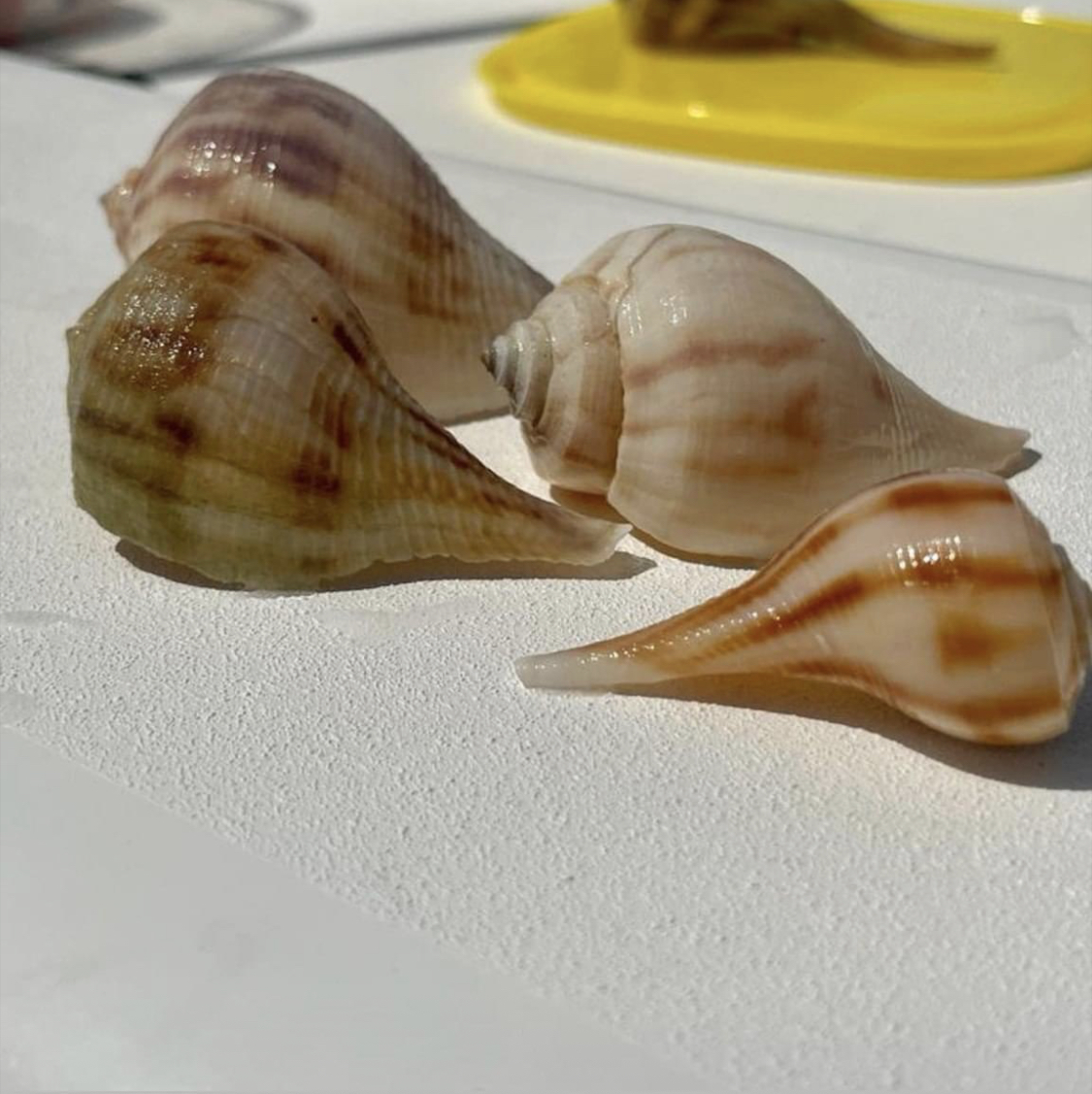Unveiling the Wonders of the Pear Whelk: A Southwest Florida Shelling Adventure
Welcome, fellow shell enthusiasts, to another fascinating journey into the intricate world of seashells! As a Florida Master Naturalist and Local Shelling Expert with Treasure Seekers Shell Tours, I’m delighted to unravel the mysteries of the Pear Whelk – a captivating species found in the coastal waters of Southwest Florida.
The Pear Whelk (Busycon sinistrum): The Pear Whelk, scientifically known as Busycon sinistrum, is a mesmerizing gastropod mollusk native to the warm waters of the Gulf of Mexico. This intriguing species boasts a distinctive pear-shaped shell, showcasing a delicate spiral pattern and a remarkable range of colors, from light beige to rich chestnut.
Habitat: Pear Whelks are commonly found in shallow coastal waters, particularly in areas with sandy or muddy substrates. They thrive in the warm subtropical climate of Southwest Florida, making the Ten Thousand Islands National Wildlife Refuge an ideal habitat for these beautiful creatures.
Two specific islands where Pear Whelks are commonly found include Kice Island and Panther Key.
- Kice Island:
- Habitat: Kice Island offers a diverse habitat with a mixture of sandy shores and mudflats, providing an ideal environment for Pear Whelks.
- Tip for Identification: Look for pear-shaped shells with a distinct spiral pattern. Pear Whelks often showcase a range of colors, from light beige to chestnut, making them stand out among other shells.
- Panther Key:
- Habitat: Panther Key is another hotspot for Pear Whelks, particularly around seagrass beds and estuarine environments.
- Tip for Identification: Pay attention to the size and shape of the shell. Pear Whelks have a characteristic pear shape, and their size typically ranges from 4 to 6 inches. Additionally, examine the aperture for the subtle flaring that is unique to this species.
Two Tips on How to Identify Pear Whelks:
- Distinctive Shape and Spiral Pattern:
- Pear Whelks are named for their distinctive pear-shaped shells, which set them apart from other shells in the region. Look for a well-defined spiral pattern on the shell surface. The smooth, rounded shape with a pointed apex is a key feature of Pear Whelks.
- Size and Aperture Characteristics:
- Pay attention to the size of the shell, as Pear Whelks typically measure between 4 to 6 inches in length. Additionally, examine the aperture, the opening of the shell. Pear Whelks have a characteristic flaring at the aperture, providing a unique identifier when sorting through shells on the islands.
By focusing your shelling endeavors on islands like Kice Island and Panther Key within the Ten Thousand Islands National Wildlife Refuge, and employing these identification tips, you’ll enhance your chances of discovering the exquisite Pear Whelks amidst the diverse array of shells.
Reproduction: Reproduction in Pear Whelks involves the laying of egg capsules, often resembling small clusters of grapes. These capsules are anchored to submerged structures like seagrasses or other shells. The fascinating life cycle of Pear Whelks contributes to the rich biodiversity of our coastal ecosystem.
Diet: As carnivorous predators, Pear Whelks primarily feed on bivalves, such as clams and mussels. Their radula, a toothed tongue, assists in drilling through the shells of their prey. This predatory behavior plays a crucial role in maintaining the balance of marine populations in our coastal waters.
Where to Find Pear Whelks in Southwest Florida: To increase your chances of discovering Pear Whelks in Southwest Florida, focus your shelling adventures in the following areas:
- Estuarine Environments: Explore estuaries and tidal channels, where Pear Whelks are often found in the mud and sand, taking advantage of the nutrient-rich waters.
- Near Seagrass Beds: Pear Whelks are known to inhabit areas near seagrass beds, as these locations offer both protection and a readily available food source.
Shelling Tips for Pear Whelk Enthusiasts:
- Timing Matters: Optimal shelling times for Pear Whelks are during low tide periods. This increases your chances of finding these shells exposed on the sandy shores.
- Observe the Environment: Keep an eye out for signs of recent predation, such as shell fragments or bored holes, as these indicators can lead you to areas where Pear Whelks may be actively hunting.
Historical Significance and Interesting Facts: Throughout history, Pear Whelks have held cultural and practical significance for coastal communities. Indigenous peoples used the shells for various purposes, including tools, ornaments, and even as ceremonial objects. The durable nature of the Pear Whelk shell made it a valuable resource in crafting items essential for daily life.
To ensure you have the best shelling experience and access to additional resources, explore our YouTube channel: Treasure Seekers Shell Tours – Ten Thousand Islands Shelling.
Join us in the preservation and appreciation of Southwest Florida’s unique ecosystem by following these shelling tips and discovering the wonders of the Pear Whelk. Don’t forget to share your experiences with us on social media using hashtags like #PearWhelkAdventure, #TreasureSeekersShellTours, and #SWFLNatureExploration.
Happy shelling!
